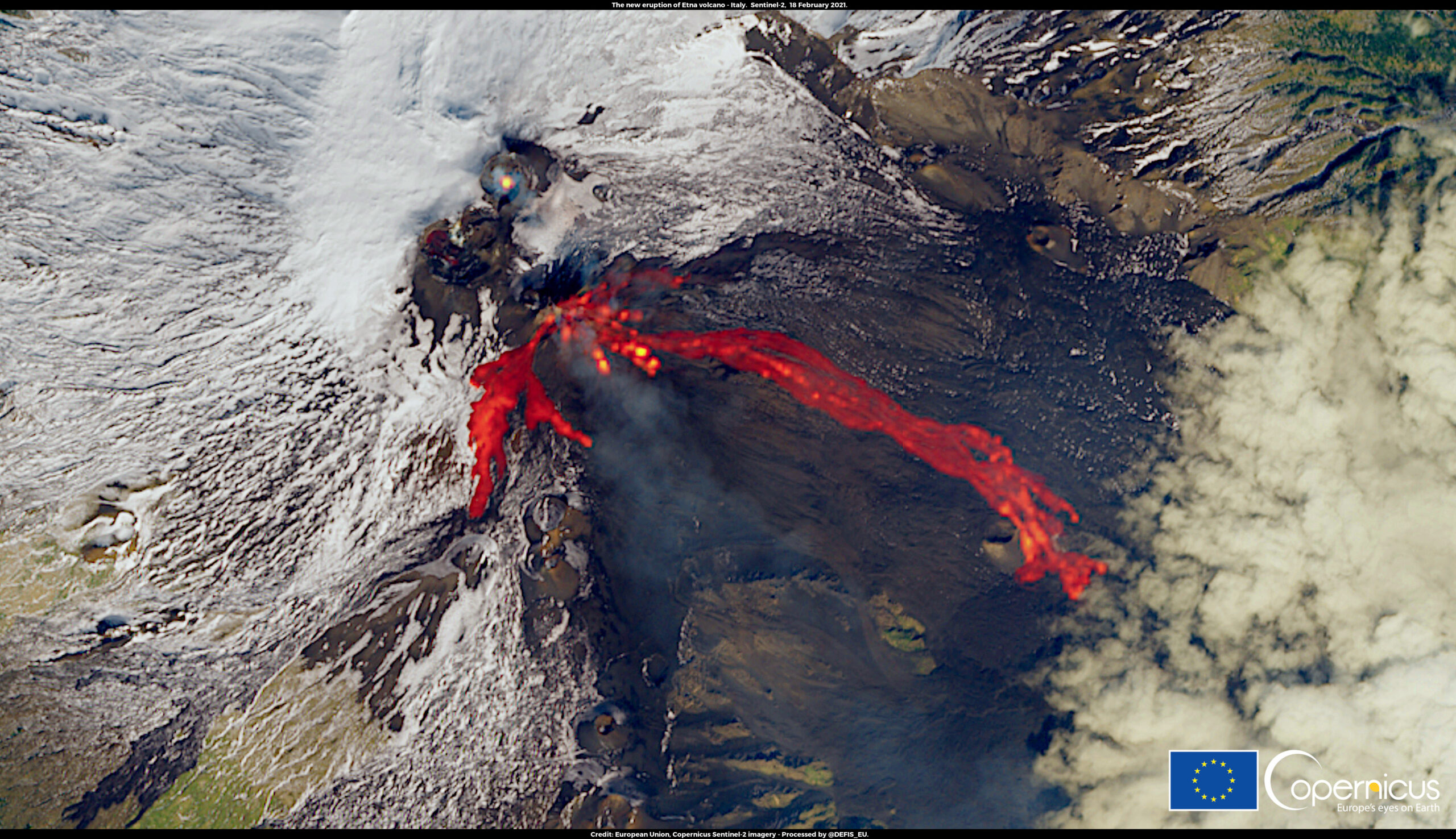On 16th February 2021, a major eruption of Mount Etna volcano was observed in Sicily (Italy).
Since then, several other eruptions have followed. Some of them have been so strong that they could be easily seen from space!
Copernicus Sentinel-2 is the special guardian for volcanic activity: its high spatial resolution and an average revisit time of five days give insights into various volcanic processes.
On February 18th, Copernicus Sentinel-2 acquired a spectacular image (at the top of this article) that, thanks to infrared imaging, shows bright orange and red lava flowing into the Valle del Bove basin via the volcano’s southeast flank.
The major eruption was preceded by some explosions, whose frequency and intensity gradually increased, up to the eruptive episode, followed by lava fountains (up to 700 m) and emissions of ash (up to 9.1 km above sea level). Ashes and debris have been observed up to 20 km far from the volcano.
The 18th February eruption has been followed by several other episodes. The last one was observed in the night between 9th and 10th of March. Once again, after some minor explosions, the major eruption was extremely intense, with a column over 7 km and the lava flow reaching Valle del Bove up to 1800 m.
Please check this video from the Etna Observatory of the Italian National Institute for Geophysics and Volcanology for some spectacular images of the eruption from 9-10 March.
Some facts about Etna
Mount Etna is located in the island of Sicily (Italy). It is an active volcano, with the first recorded eruption dating back to around 400 BC. It is the most active volcano in Europe and the highest one outside the Caucasus, reaching over 3000 m.
Eruptive activity makes the surrounding soil very fertile, for this reason, throughout the centuries, many small villages developed on the slopes of the mountain, despite the dangers of living near an active volcano.
One of the deadliest eruptions of Etna dates back to 1669, with lava flows destroying at least 10 villages on the southern flank and reaching the city walls of Catania 15 days after the eruption started. Other major eruptions have followed over the centuries.
In Greek mythology, the deadly monster Typhon was trapped under this mountain by Zeus, the god of the sky and thunder and king of gods, and the forges of Hephaestus were said also to be underneath it.
Cover picture credits: European Union, Copernicus Sentinel-2 imagery

